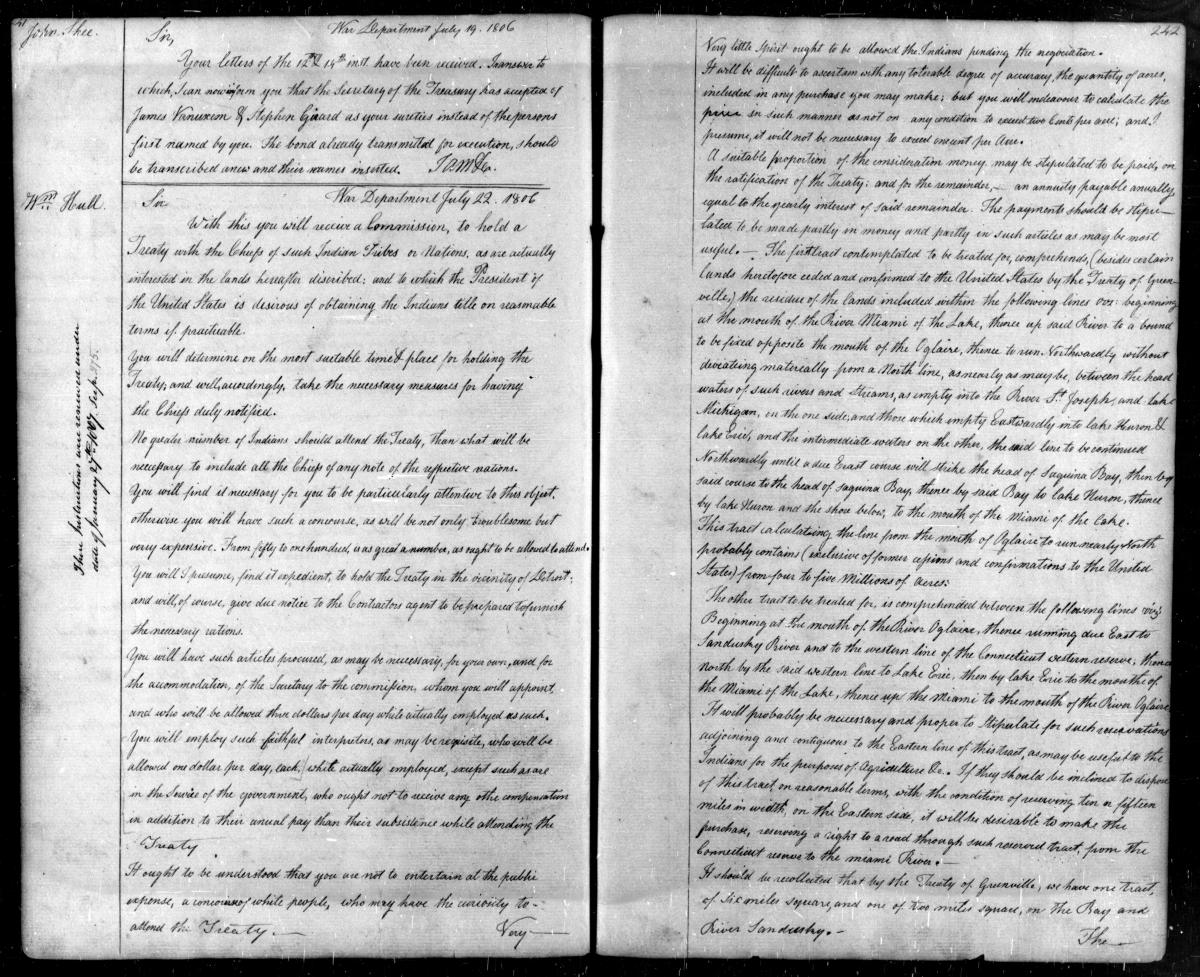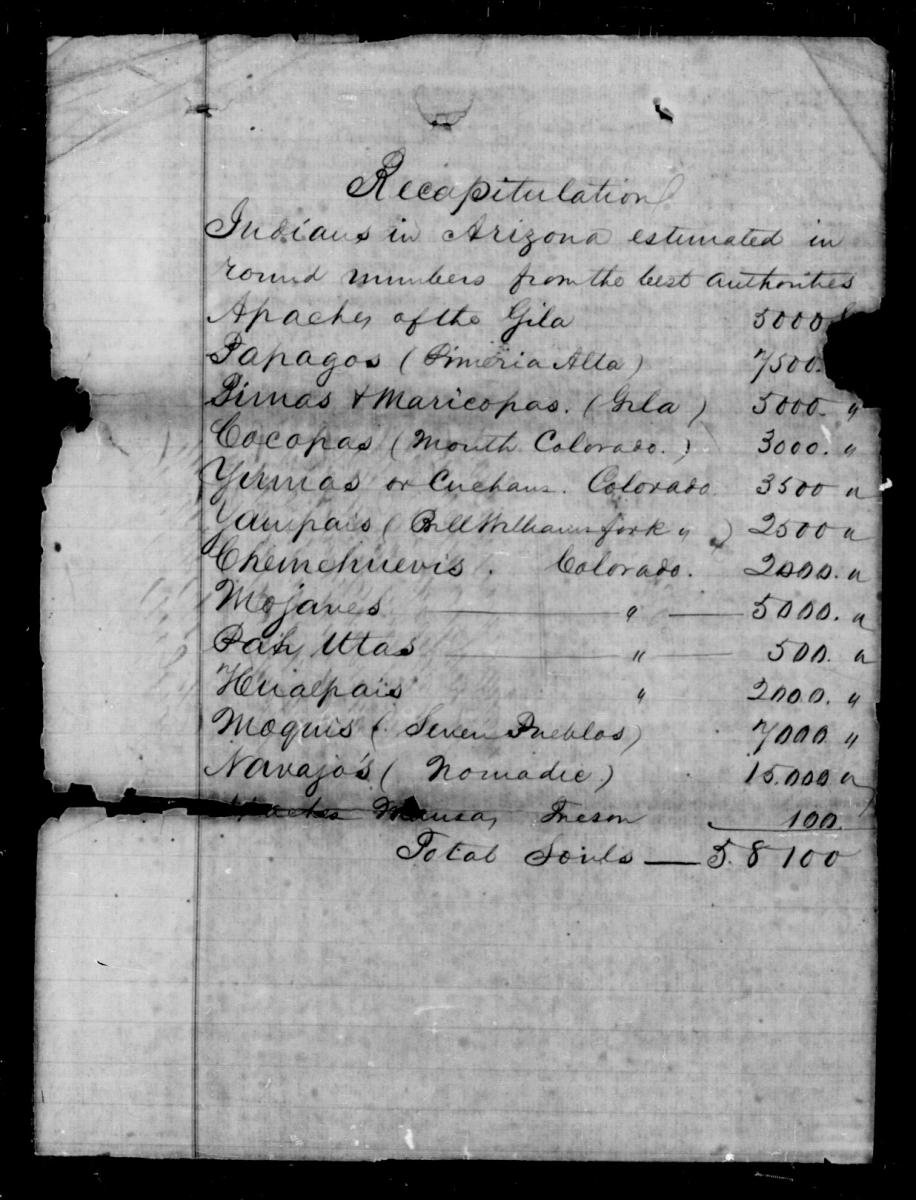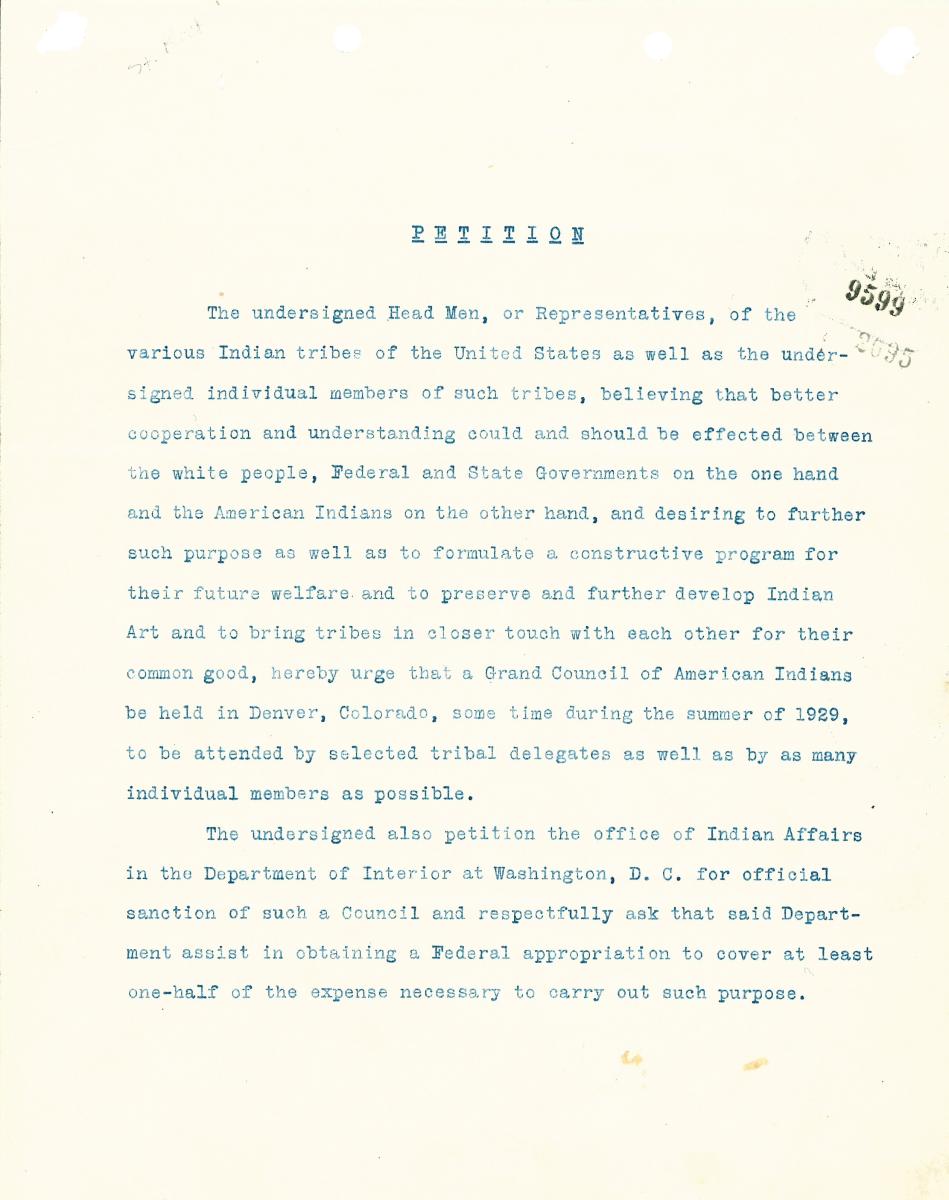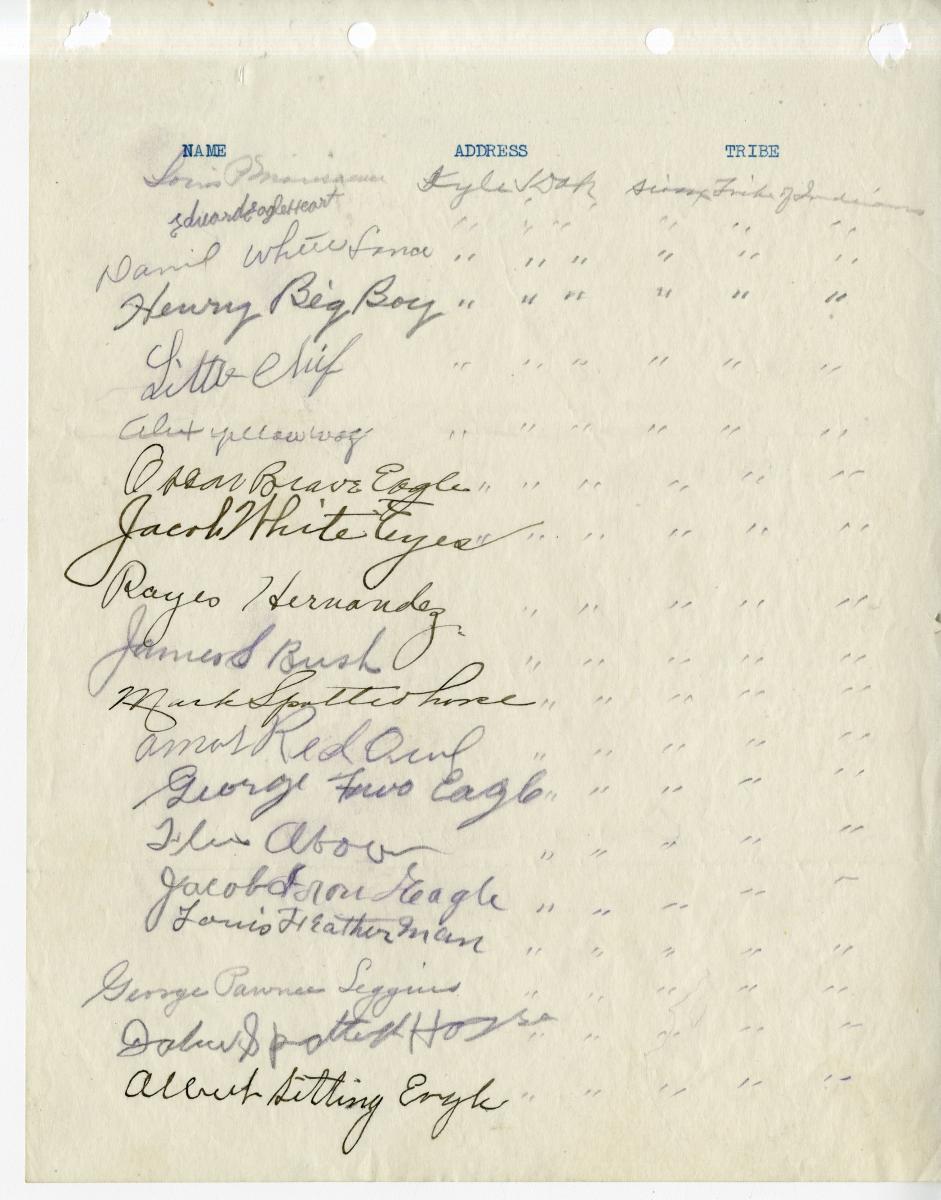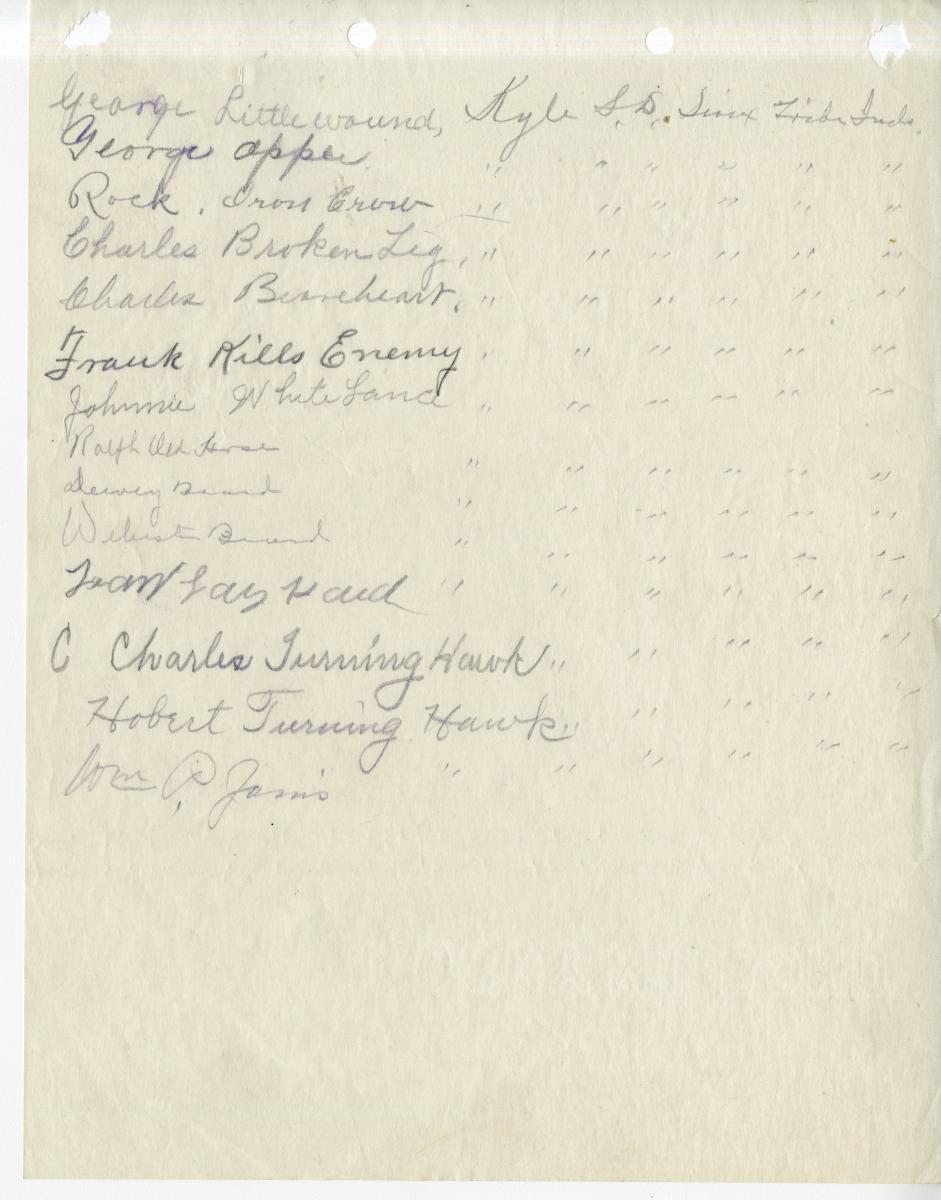
Bureau of Indian Affairs Records: Correspondence Files
The National Archives houses many correspondence files created or maintained by the Bureau of Indian Affairs (BIA)—formerly known as the Office of Indian Affairs (OIA)—in Record Group 75. These records date as early as 1800 and, depending on the specific BIA office, as recently as the 1970s.
BIA correspondence files cover a wide range of topics and include letters sent and received between BIA headquarters and field offices; other federal agencies; state, local, and tribal governments; the President and members of Congress; private businesses; and members of the public.
Record-keeping practices changed over time, and there is no consolidated index to all BIA correspondence at the National Archives. However, researchers can generally approach BIA correspondence according to the time period: 1800–1823, 1824–1907, and 1907–onward.
Time Period: 1800–1823
Before the BIA was established in 1824, the Secretary of War oversaw most federal activities related to Indian affairs. An exception was the federally operated factory system of trade with American Indian tribes, which was overseen by the Office of Indian Trade. (For an administrative history of this office, see National Archives Identifier 10482702.)
Letters sent and received by the Secretary of War relating to Indian affairs and by the Office of Indian Trade were later transferred to the BIA and are now part of Record Group 75.
Examples
All records listed below are microfilmed and fully digitized in the National Archives Catalog. Click the National Archives Identifiers for the full archival records descriptions and links to digitized images.
- NARA Microfilm Publication M271, Letters Received by the Office of the Secretary of War Relating to Indian Affairs, 1800–1823 (National Archives Identifier 1991067)
- NARA Microfilm Publication M15, Letters Sent by the Office of the Secretary of War Relating to Indian Affairs, 1800–1823 (National Archives Identifier 2007294)
- NARA Microfilm Publication T58, Letters Received by the Superintendent of Indian Trade, 1806–1824 (National Archives Identifier 2007300)
- NARA Microfilm Publication M16, Letters Sent by the Superintendent of Indian Trade, 1807–1823 (National Archives Identifier 2013813)
- NARA Microfilm Publication T1029, Letterbook of the Natchitoches-Sulphur Fork Factory, 1809–1821 (National Archives Identifier 2102879)
- NARA Microfilm Publication M142, Letter Book of the Arkansas Trading House, 1805–1810 (National Archives Identifier 2049952)
For questions related to these records, please contact the Archives 1 Reference Branch in Washington, DC, at archives1reference@nara.gov.
Time Period: 1824–1907
Between 1824 and 1907, BIA offices typically maintained separate series of incoming and outgoing correspondence. Depending on the office, the correspondence may be arranged chronologically, by BIA jurisdiction, by file number, or by a combination of these elements. Indexes or registers may be available for select series.
Examples
All records listed below are microfilmed and fully digitized in the National Archives Catalog. Click the National Archives Identifiers for the full archival records descriptions and links to digitized images.
- NARA Microfilm Publication M234, Letters Received by the Office of Indian Affairs, 1824–1880 (National Archives Identifier 300331)
- See Highlights from the “Letters Received by the Office of Indian Affairs, 1824–1880” (Microfilm M234) for examples of records from this series.
- NARA Microfilm Publication M18, Registers of Letters Received by the Office of Indian Affairs, 1824–1880 (National Archives Identifier 2103470)
- NARA Microfilm Publication M21, Letters Sent by the Office of Indian Affairs, 1824–1881 (National Archives Identifier 2105779)
-
NARA Microfilm Publication M348, Report Books of the Office of Indian Affairs, 1838–1885 (National Archives Identifier 2105780)
For more information about BIA offices and jurisdictions between 1824 and 1880, see NARA Microfilm Publication T1105, Historical Sketches for Jurisdictional and Subject Headings Used for the Letters Received by the Office of Indian Affairs, 1824–1880, which is fully digitized in the National Archives Catalog (National Archives Identifier 229037271).
For information about letters received by BIA headquarters between 1881 and 1907, see the blog post "Accessing the Letters Received by the Office of Indian Affairs, 1881–1907."
For additional series, search the National Archives Catalog by record group number (“75”) and keyword (e.g., “letters sent,” “letters received”), and then filter your results by date.
See Using the National Archives Catalog for additional search tips, and Contact Us with questions.
Time Period: 1907–Onward
On August 20, 1907, the BIA central office ceased maintaining separate series of incoming and outgoing correspondence. Thereafter correspondence was filed according to a decimal-subject classification system. See Central Classified Files, 1907–1975.
Many BIA field offices also began in 1907 to shift away from using chronological filing systems for correspondence. However, a formal decimal filing system was not prescribed for BIA field offices until January 1, 1926. New decimals were added as the need arose. For more information, see the blog post "Swing into the Bureau of Indian Affairs Filing System."
Examples
Click the National Archives Identifiers below for the full archival records descriptions in the National Archives Catalog and links to digitized images, when available.
- Albuquerque Indian School: “General Correspondence File of the Albuquerque Indian School, 1881–1936” (National Archives Identifier 292863)
- A folder list for this series and select digitized photographs are available in the National Archives Catalog.
- Contact the National Archives at Denver for more information.
- Navajo Agency: “Central Classified Files, 1924–1954” (National Archives Identifier 295145)
- Select photographs from this series have been digitized in the National Archives Catalog.
- Contact the National Archives at Riverside for more information.
- Pine Ridge Agency: “Main Decimal Files, 1900–1965” (National Archives Identifier 285586)
- Select records from this series have been digitized in the National Archives Catalog, including files related to Fairs and Expositions (Decimal 047).
-
Contact the National Archives at Kansas City for more information.
For additional series, search the National Archives Catalog by record group number (“75”) and keyword (e.g., “decimal files”), and then filter your results by date. See Using the National Archives Catalog for additional search tips, and Contact Us with questions.
